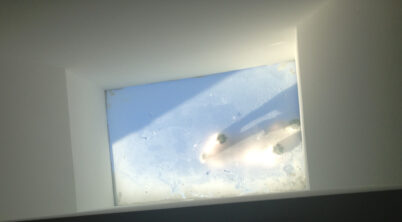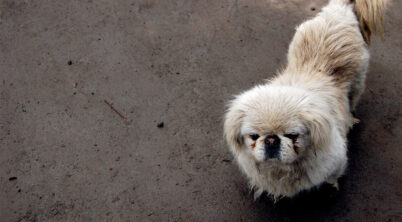Pekingese dogs, a breed known for their distinctively short snouts and flat faces, are prone to experiencing breathing problems. The condition, commonly termed Brachycephalic Airway Obstruction Syndrome (BAOS), is prevalent due to the structural anatomy of these dogs. Their characteristic facial structure leads to compressed nasal passages and a long soft palate, resulting in an obstructed airway. This syndrome can manifest as snoring, wheezing, coughing, or difficulties with breathing during physical activity.
Aside from the immediate complications related to their respiratory system, Pekingese dogs may also suffer from secondary issues due to inadequate air intake. In their struggle to inhale sufficient air, these dogs can face exertional heat intolerance, especially in warmer climates or during vigorous exercise. Consequently, they are at an increased risk of overheating, which necessitates careful monitoring to prevent heatstroke and support their well-being.
To manage these breathing challenges, it is crucial for owners to maintain the Pekingese’s optimal weight and avoid exposure to respiratory irritants such as smoke and dust. The care regimen for a Pekingese with respiratory problems should also include regular consultations with a veterinarian to monitor their breathing health and to discuss potential preventative or mitigating strategies.
Table of Contents
Brachycephalic Airway Syndrome
Pekingese dogs often experience breathing problems due to their distinct skull shape, which can lead to Brachycephalic Airway Syndrome (BAS). The key aspects of BAS include anatomical respiratory tract issues specific to brachycephalic breeds, contributing to a range of breathing difficulties.
Defining Brachycephaly
Brachycephaly refers to a dog’s skull shape that is broad and short, often leading to flat faces. This characteristic skull structure, which is prominent in Pekingese, predisposes these dogs to upper airway abnormalities. Dogs with brachycephalic traits may possess elongated soft palates, stenotic nares, and other features that compromise the respiratory system.
Common Respiratory Issues
The compressed structures in the respiratory system of brachycephalic dogs tend to cause several issues:
- Noisy breathing/snoring: Due to narrowed airways, breathing becomes audibly labored.
- Mouth breathing/panting: Dogs often default to breathing with their mouths to intake more air.
- Snorting/gagging: Small air passages can lead to frequent gagging or snorting sounds, especially during excitement or exercise.
- Respiratory distress: Severe cases may result in clear signs of respiratory difficulty, such as wheezing or heavy panting.
Identifying Breathing Difficulties
Owners of Pekingese may identify breathing problems through several indicators, including:
- Difficulties with breathing after minor activity or in hot weather.
- Struggles with eating and sleeping due to respiratory distress.
- Observable efforts to breathe, including panting and wheezing, even at rest.
Being aware of these signs is crucial for the well-being of dogs suffering from Brachycephalic Airway Obstruction Syndrome (BAOS). Prompt veterinary attention is needed to manage the condition and ensure better quality of life.
Health Management and Veterinary Care
Effective management of health issues in Pekingese dogs requires a proactive approach to veterinary care, focusing on prevention, early diagnosis, and appropriate interventions. Owners should collaborate with veterinarians to ensure that their Pekingese enjoy a high quality of life.
Regular Health Check-ups
Regular veterinary assessments are critical for the early detection of respiratory issues in Pekingese dogs. Veterinarians can identify symptoms of Brachycephalic Airway Syndrome and recommend surgical interventions or medications to alleviate breathing difficulties. It’s vital for these dogs to have health problems diagnosed as early as possible to manage the condition effectively and prevent progression.
Diet and Weight Control
Obesity exacerbates breathing problems in Pekingese. Thus, weight management is a key component of health care:
- Feeding: Provide a balanced diet and measure food portions to maintain a lean body condition.
- Weight Monitoring: Regular weigh-ins help track changes and adjust the diet when necessary.
Exercise Recommendations
Due to their respiratory constraints, Pekingese dogs require tailored exercise regimens:
- Physical Activity: Low-intensity activities, such as short walks, are suitable to keep Pekingese active while minimizing respiratory strain.
- Balance: Combine exercise with sufficient rest to avoid overexertion.
Veterinarians can offer guidance on the right balance of rest and activity to support the overall health management of Pekingese dogs.
Specific Health Concerns of Pekingese Dogs
Pekingese dogs are a distinctive breed with a host of particular health issues, primarily due to their compact, brachycephalic facial structure. Breathing difficulties are especially prevalent in this breed and can manifest as snoring, wheezing, coughing, and rapid breathing. These are often due to conditions such as Brachycephalic Airway Syndrome (BAS), which encompasses structural abnormalities like small nostrils, an elongated soft palate, and potential laryngeal collapse.
Another concerning health problem for Pekingese canines is heart disease. This breed is susceptible to various cardiac conditions that require vigilant monitoring. Allergies also pose a common issue, leading to inflamed airways that exacerbate breathing problems.
The Pekingese’s eyes are prone to disorders due to their prominent shape. Conditions such as dry eye, corneal ulcers, and cataracts can lead to blindness if not managed promptly. Cherry eye, characterized by a prolapsed third eyelid, is another eye complication these dogs face.
Reproductive health in Pekingese may be challenged by occurrences of hernias, while their dense, plush coats make them prone to heat stroke. Exercise should be moderate to prevent overstressing their system, as they often exhibit exercise intolerance.
Orthopedic issues in Pekingese include hip dysplasia, arthritis, and luxating patella—a condition where the kneecap pops out of place. Spinal problems such as intervertebral disk disease are also a concern and could lead to severe consequences if not treated.
Additionally, Pekingese may suffer from ear infections due to their floppy ears, which can trap moisture and debris. Regular cleaning is necessary to prevent such infections. Dental health is another critical area, as the breed tends to develop dental disease without proper dental hygiene and veterinary care.








